Electroacoustic Music Incorporating Latin American Influences
A consideration of implications, reception and borrowing
This paper aims to address the issue of incorporating Latin American influences into electroacoustic music. A questionnaire (Appendix 1) devised to identify sources of influence and methods of incorporation was responded to by a selection of electroacoustic composers (Appendix 2) of Latin American origin. Their responses directed the course of this research and assisted in developing many of the ideas presented in this paper. Works by these composers are used to illuminate implications and ethics surrounding the issue of incorporating Latin American influences, while both composer and listener perspectives are discussed and considered.
Introduction
The concerns that follow are intended to establish parameters according to which this research should be understood.
Development of a Subgenre
The short history of electroacoustic music can be traced back to Pierre Schaeffer and his development of musique concrètein the 1950s. Around the same time, elektronische Musik emerged in Cologne, providing a distinct opposing “school” of composition within the genre. Today, while the distinction remains, it is observable that many more divisions have taken place to form subgenres, finding influence beyond that of the electroacoustic genre’s beginnings. As a result, compositional styles and characteristic “sounds” 1[1. The word “sound” is used in a general sense, referring to an overall effect, not just an individual sound.] may typify schools of composers and also works originating from similar geographic positions.
A significant inclination amongst electroacoustic music composers of Latin American origin has been the incorporation of influence from their cultural background. Influences are drawn from environmental or musical sources that, over time have come to be representational of their culture. 2[2. The author acknowledges the variety of definitions for “culture”. From here onwards, culture refers to a society where a system of shared beliefs, customs and behaviours exist within an environment.] Argentine-born composer, Mario Verandi (b. 1960) identifies these representational sounds as “cultural sound objects” and highlights their distinction from sound objects. The hybridisations of Western and Latin American music make for remarkable listening, primarily due to the fact that the Western tradition of electroacoustic music is, in itself generally undistinguishable on the basis of cultural origin (Gluck 2005, 591).
Abstraction or Retention of Sound’s Ethnic Associations
We should remember in electroacoustic music the note does not take precedence as it does in instrumental music. In most electroacoustic works, sounds now constitute the fundamental “building blocks” of this musical genre and it is here where a conflict appears to arise with regards to incorporating Latin American influences, in particular; musics associative of ethnicity. Because culturally representational musics tend to rely substantially on rhythmic and melodic material for their recognition, the composer has to decide whether to retain or abstract the sound from its ethnic associations. Through retention, sounds are chosen on the basis of their anecdotal and emblematic aspects rather than their “abstract potential”, 3[3. Rodolfo Caesar (1992) cited in Landy and Atkinson.] while with abstraction, the implication is a complete or near complete removal of source recognition, and thus too, a removal of traditional context associations.
Questionnaire
The questionnaire was designed to survey the methods by which composers incorporate Latin American influences into their works. Questions probing sources of influence and reasons for their inclusion provided the opportunity for composers to talk about their own works. Further questions on cross-cultural borrowing were included so as to understand composers’ thoughts on issues of appropriation and ethics.
The questionnaire was not designed with the intention of obtaining statistical data, but more as a means of examining composers’ perspectives and compositional methods through the posing of eight general questions allowing for varying responses.
With regards to selection, composers were approached on the basis of their Latin American origin and whether their electroacoustic musical output was applicable to the issues at hand.
Cultural Dependent Reception
Denis Smalley’s notion of spectromorphological thinking is dependant on past experience of “sounding and non sounding phenomena outside music, a knowledge everyone has” (Smalley 1997, 125). Everyone has different relationships with sounds due to their individual experiences. These different relationships become more dramatic as we turn our attention to other nationalities and cultures, as experiences and environments become significantly different to our own. With this in mind, electroacoustic music with ethnic cultural incorporations will thus be received on many levels depending on the listener’s own cultural and ethnic background. Our ability to associate and to “source bond” (ibid.) sounds to events is reliant on previous encounters — for instance, sounds specific to a particular culture have associations and meaning that may be specific to people from that background.
Involving sounds, linked to a particular environment or ethnic culture, is an unconscious exclusion to those from other ethnic backgrounds who are unfamiliar with such sounds. Argentine-born composer Michael Rosas Cobian (b. 1953) agrees that the Western reception of such incorporations is one that generalises sounds as “exotic” and “hard to penetrate.” The reception he has experienced in the Pan Americas and Mediterranean areas towards his compositions involving Latin American influences is generally more positive as “gestures, imagery and references are more familiar,” so their inclusion is more clearly understood.
The “exclusion” mentioned above may be thought of as only partial, as by the very act of incorporating influences associative of ethnicity, the composer has already communicated a connection with their own heritage. Undoubtedly the communication will thus be received with greater understanding by those from that culture who have experienced the sound’s original context associations. For example, the inclusion of a syncopated clave rhythm may bring to mind the association of a samba rhythm to the culturally inexperienced, but will not connote the slave dance and the struggle for social justice that it may represent to the people of southern Brazil. This example, showing that there is no stable meaning within any particular sound or other object, is supported by the ideas presented in reception theory. 4[4. Ian Bent, “Hermeneutics,” Grove Music Online ed. L. Macy (Accessed 13 January 2006): “Reception theory disputes the notion that the meaning of a work of art is set for all time once it is released to the public, and can thus be understood purely by reconstructing contemporaneous conventions and beliefs.”] Regardless of the composer’s intended expression of an included sound, the receiver will construct their own interpretation and meaning, based on their individual cultural background and life experiences. Smalley upholds this statement explaining:
Source bondings may be actual or imagined — in other words they can be constructs created by the listener; different listeners may share bondings when they listen to the same music, but they may equally have different, individual, personalised bondings; the bondings may have never been envisaged by the composer and can occur in what might be considered the most abstract of works.” (Smalley 1997, 125)
Sources of Influence and Methods of their Incorporation
The following paragraphs intend to identify sources of influence Latin American electroacoustic composers have drawn upon and their varying approaches to the challenge of integration in their works. Composer’s perspectives on the implications and functions of their incorporations are presented and discussed.
Traditional Instrument Use
The use of instruments particular to a country or culture is a popular method of incorporating Latin American influence into electroacoustic music. Brazilian-born composer, Rodolfo Coelho de Souza’s (b. 1952) Concerto (2000) uses typical Brazilian instruments as source sounds for the electroacoustic material. The berimbau, cuica and zunidores instrumental sounds provide inspiration for the computer-generated sounds. As a result, the generated sounds bare strong relationships and mimesis to those of the Brazilian instrument samples.
Coelho de Souza justifies his reasons for their incorporation as an “idea to expand the orchestral spectrum using sounds that might surprise the audience for not belonging to the world of concert music, and also for not having a viable source, but, at the same time being recognisable as familiar symbols of the Brazilian music culture” (Coelho de Souza 2005, 32). He draws a parallel with his own compositional method to that of Heitor Villa-Lobos “who built personal musical languages by combining elements of Brazilian musical culture with techniques that represented the state of the art music of the times” (ibid., 33). As with many of the composers responding to the questionnaire, Coelho de Souza is aware of his incorporations being a fusion of past and present, in terms of previously established musics and instruments with new technologies.
Instruments typical to a country or culture have strong associations formed from their traditional context appearances. In Coelho de Souza’s Concerto, for example, the berimbau traditionally accompanies the martial art form of capoeira and also features in candomble religious rituals. Influences drawn from the instrument’s traditional usage provided compositional strategies in the Concerto in a “top down” approach. One strategy, identified as “closer to traditional nationalistic practices” was the displacing of a traditional rhythmic and melodic cell produced by the berimbau to other instruments in the orchestra (Coelho de Souza, 33). Allowing such an aspect to be imposed upon the composing of the work has the strong implication of the composition conveying a more obvious “cultural identity”, since the composer is still working within the constraints of the instrument’s traditional practice and known capabilities.
Agustin Fernandez (b. 1958) views his incorporations of folk music and instruments typical of his Bolivian heritage as influences that could not be ignored. Although it was the music of “Brahms and Beethoven et al” that inspired Fernandez to compose, he soon discovered:
I could only say something worth hearing if I based my utterances on the music and noises I had been brought up hearing and making in the first decade of my life. … I have expanded since, through studying and living in different countries but I still feel that the core of what I do is an extension of the vernacular musics I was born into.
In his work Silent Towers (1990) for tape, the incorporation of the charango (a Bolivian instrument Fernandez was trained in, in his youth) takes on a hybrid character somewhere between that of synthesis and the traditional instrument itself. His experiments with Bolivian sounds in electroacoustic music are viewed as “an extension of the aforementioned mechanism of inflecting/vastly altering an available vocabulary for personal use.” Incorporations are explained as creating a habitat for one’s own creativity and a means of “signalling allegiance to where one belongs culturally.”
Latin American Dance Forms
Rajmil Fischman (b. 1956) is one composer who has drawn influence from dance forms familiar from his cultural background. His Peruvian heritage and exposure to Latin American dance music such as mambo, bolero, cumbia and salsa are found to influence his compositions to varying degrees. The direct mambo quotations in his acousmatic work Alma Latina (1997) appear as moments of Latin American “reality” within an abstract “electroacoustic landscape.” Using abstraction to define universality, Fischman’s placements of the short mambo interjections within the abstracted landscape effectively express a concrete statement of specific identity. Such mimetic discourse (Emmerson 1986, 17) of Latin American dance forms relies on the sounding of untransformed material, in this case the “famous exclamation ‘huh!’, brass stabs and cadences from mambo.”
Other influences from dance forms in Fischman’s works have involved the reconstruction of a basic paradigm of a rumba polyrhythm in his acousmatic work Kol HaTorr and the “proprioceptive” 5[5. “While the relationship between musical gesture and rhythm with a physical movement — identified by the composer Denis Smalley as proprioceptive — is a general characteristic of many musics, the emphasis is on a particular kind of expression that is linked to the experience of dancing genres such as cumbia, son or salsa.” (Fischman 1999, 56)] characteristic of relating musical gesture to physical movement, resulting in a particular kind of expression that is linked to the experience of dancing genres. This latter influence cannot be considered as a direct reference to any particular genre, but instead, generative of a Latin American flavour personal to Fischman’s own musical language.
As with many of the composers participating in the questionnaire, it is a personal affinity with certain Latin American musics that promoted Fischman to integrate these influences. He identifies that his incorporations are both conscious and unconscious acts, through processes of learning and absorption respectively.
Many dance forms typical to countries and cultures within Latin America have extensive histories deeply embedded and entwined with social and political situations from particular times. By incorporating these influences Fischman is choosing to confront the global conceptions particular to these influences. In Alma Latina he:
attempted to capture amongst other experiences, the extreme response provoked by strong images of joy and pain amidst the contrasting richness and poverty of a South American city, which serve here as representative of a historico-political situation. 6[6. Rajmil Fischman, CD liner note from Alma Latina [Lorelt LNT113].]
Environmental Influence
Argentine-born composer Ricardo Dal Farra (b. 1957) finds influence in the sonorities of the Andes Mountains environment in his work Tierra y sol (1996) for tape. Traditional Andes woodwind instruments are incorporated, such as quenas and mohoceños in addition to the voice of an Andean folk singer and the more “cross-cultural instrument sounds of the charango and classical guitar (introduced to America during the Spanish colonization).” This work is not only an environmental reflection, but an expression of connections. Dal Farra describes these connections as “past-present-future”, “primitivism-hyper technology”, “South-North” and “simple-complex.” These connections are particularly significant to all works where composers have engaged with traditional aspects as these sounds are revisited and become reinvented, combined with modern technology. As with many of the composers participating in the questionnaire, Dal Farra explains his incorporations as coming from his deep interest in aspects of Latin American culture and a desire to preserve its “cultural goods.”
In contrast are the views of Brazilian-born composer, Flo Menezes (b. 1962). He describes his “meeting again with the wonderful tropical nature of the Brazilian beach, after having lived so many years in Europe” as an inspirational force in his composition A Dialética da Praia (1993) (The Dialectics of the Beach). In this work for two percussionists and electroacoustic sounds, 70 percussion instruments, some of folk origin, are used in “homage to the sonorities of the Brazilian beach.” “The dialectics reflected the opposition between musical determined events and the tendency of entropy given in many natural phenomena.”
Although folk instruments are incorporated into A Dialética da Praia, Menezes feels his music has “no relationship with any kind of national colour or Latin style,” as “In general I develop my musical language trying to avoid recognition of music provenance of any kind.” This shows Menezes’ disinterest in emphasising a sound’s prior associations. Although, in terms of reception, we may not be able to divorce the association of ethnicity with a sound, Menezes feels his “music should go up further… towards a cosmological sense” beyond a mere reinforcement of ones “social base.”
Points of Departure
Mario Verandi points out that he “found musical potential in these [Latin American music] elements. This musical potential could be related to timbre or to gestures or to musical structure.” In his work Evil Fruit (2000), Verandi incorporates Brazilian percussion instruments used only for their “spectral components” as he feels “foreign” to the Brazilian context they belong to. These sounds provide “a point of departure to develop something different” as opposed to working within in the constraints of a Brazilian style or form.
Similarly, Federico Schumacher’s “bottom up” compositional method uses cultural influences of his Chilean heritage as “beginning points” for compositions. Sounds of ethnicity do not dictate a restrictive narrative in his works and he believes that “if the composer wants, he can take off all the ethnic (or other) sense to a found sound by the means of musical construction.” His compositional process involves the decision to use material of personal preference, and more consciously, materials with “ethnic, popular or historic elements.” Schumacher identifies that both decisions are formed from “life experiences.” Source sounds from radio recordings provide him with culturally specific material in his composition as in Palabras del sur (1998), made with “synthetic sounds and words from Yamanas, Kaweskar and Mapuche recordings” (areas in the south of Chile). Using speech sounds in a native tongue is undeniably an effective way of conveying a cultural connection, whilst also supporting the notion of exclusion within reception.
Political Statements
It was unanimously agreed that the achievement of a political statement in electroacoustic works requires illumination through words. This approach is found in Alberto Villalpando’s (b. 1942) Bolivianos…! (1973). The inclusion of text is explained:
… it was developed like a political declaration, during a nightmare. The action takes place after the Chaco War, when Bolivian nationality began…. The text mentions Peñaranda, the president at that time, and some of the problems like education and ignorance also appear. (Dal Farra 2004)
Acknowledgment of Roots
Michael Rosas Cobian’s Gato’s Raid (1994)is much like a reflection on past experiences of ethnic musics. Taken from a series of works entitled Raza, meaning “race”, Raza “represents the composer’s memory of the sound world into which he was born… Gato [cat] represents the composer who goes out on a raid through the musics and images of his many lives.” 7[7. Michael Rosas Cobian, CD liner note from Alma Latina [Lorelt LNT113].] Rosas Cobian explains the influences are not specific of Argentina but all of the Americas “from its ethnic regional music to the present, and with all the influences contributed by its history and its many cultures.”
This music, acknowledging one’s own identity as a formulation of many influences and experiences, addresses not only personal identity, but the composition itself conveys its own identity. “Music is a product of its environment; it is experience transformed into sound. The materialization of this experience will vary according to the socioeconomic milieu and consciousness of the composer” (Ortiz 1988, 215). Fischman adds “when a person composes, (s)he does it within a cultural context, including signs, structures and networks of meaning that have come to be meaningful within the culture in which (s)he operated (even if these contradict that culture). … If one composes electroacoustic music, the context inevitably includes its roots, history, developments and even its conduits for dissemination; all of which are a product of Western culture.”
It is perhaps a premature generalization to assume that all works from émigré composers incorporating ethnic influences are intentional efforts at identity exploration. The questionnaire has, however undoubtedly revealed the inescapable impact background culture has upon composing, especially upon composers now displaced, for one reason or another, from their country of origin. They tend to a greater degree to acknowledge their roots as more significant influences. Fischman admits that the Peruvian folklore he was exposed to in his youth was “not necessarily welcome” at the time, “shunned by the middle classes in the 1960s, regarded as music of the uneducated migrants from the highlands,” but its influence remained, emerging several years after leaving Lima (Fischman 1999, 56).
Discussion of Questionnaire Responses
Given that in many cases, composer’s interactions with Latin American influences appear to be unconscious rather than intentional acts, we may begin to establish general trends in electroacoustic music coming from cultural environments of this continent. One example is Coelho de Souza identification that “the speed of change in his music (much faster than, for instance, in Canadian electroacoustic music) can be related to the Brazilian taste for strong rhythms.” His compositional methods in this instance are instinctive, resulting from involvement in personal culture.
It became apparent from the questionnaire responses that the concept of ‘nationality’ is on the whole regarded as an “artificial construct”. 8[8. Rajmil Fischman, questionnaire response, 2005.] Cultural background was considered a much greater influence upon composers’ works, a factor which each composer felt they could not be detached from. As discussed in relation to reception, everyone has different experiences of sound and those sounds that we are culturally familiar with from early experiences are absorbed unconsciously. Whether we as composers choose to address these experiences is an entirely different issue, as in doing so, a statement is ultimately made, whether it be of identity, affirmation of roots or an affinity of a cultural aspect.
A personal opinion is that nationality should not be denied completely of its significance in such compositions, as in some cases signalling one’s allegiance to cultural heritage can be viewed as a form of patriotism. Anthems and national styles have after all developed from cultural traditions.
Borrowing
In the instance of borrowing cultural aspects, the composer is faced with the undeniable aesthetic implications of materials being taken out of context. Namely changes in status and meaning. The same is true for the use of instruments bound up with cultural traditions and associations. We must remember, however, the orchestral instruments of the Western world which have successfully found a place in electroacoustic music, a place they were certainly not designed for.
Issues of Cross-Cultural Borrowings
Whilst a hereditary connection has not been a necessity for those incorporating Latin American aspects into their electroacoustic works, the wealth of unexplored sonorities of traditional ethnic instruments and sounds of the “exotic” may be primary reasons for such an attraction.
For composers choosing to borrow from cultures other than their own, a greater challenge may be presented when incorporating sound material into electroacoustic music. Argentine-born composer Pablo Furman recognizes his lack of comprehension of culturally unfamiliar sounds acts as a discouragement to borrowing: “I have no clue as to what that [culturally unfamiliar sounds] means and therefore have no valid reference.” From this perspective we can therefore see why “often this integration is problematic, especially when the borrowing is done in a manner that is ignorant or disrespectful of inherited traditions” (Gluck 2005, 595).
In works involving cultural borrowings from Latin America, many of the composers responding to the questionnaire displayed dissatisfaction with attempts. Agustin Fernandez has experienced that there is “no spirit behind it” as the borrowings involve only that of “gestural surface,” while Michael Rosas Cobian’s disappointment in these works stems from the incorporation of “for export” stereotypical material. Stereotypical, clichéd sounds emerging through overuse are often incorporated with an awareness of the delicate western palette of music appreciation and its inability to stomach the unfamiliar. The resultant works often involve easily associated sound materials that tend to be assumed signifiers of particular cultures. Equally dangerous is looking beyond clichéd sound material for potential incorporations, resulting in arbitrary sound choice, based on “exotic” appeal without thought to their surfeit of associations.
Contrary to this, those tentative of sound incorporations associative of ethnicity, or those who consider technology to distort traditions that are best left alone, only display a natural apprehension of a relatively uncommon practice. This trepidation is also attributable to the “increasing political correctness and cultural sensitivity regarding cultural appropriation” that has “made the territory difficult for the uncommitted or simply curious” (Whalley 2005, 1).
No one has ownership of the cultural traditions and to claim such ownership is a form of cultural authoritarianism. Composers borrowing aspects of other cultures and subjecting them to their own creative impulses are justified providing no claim of authenticity is made as so to avoid the reduction of traditions to fetishisms. Federico Schumacher mentions that if aspects remained confined to particular cultures, cultures themselves would “stay isolated for a long time.” His mixed background influences his view: “I can only support the opening of all frontiers.”
Ricardo Dal Farra provides an example of cross-cultural borrowing in his composition Ashram. He explains “I don’t feel I was doing something wrong or bad” with regards to the use of traditional Mukha Veena double reed instruments from India. “The use each one makes of those resources or possibilities makes the difference… possibly here the issue is ethics.”
Conclusion
As intended, the questionnaire revealed sources of Latin American influence and the compositional methods in which these influences are incorporated into electroacoustic music. Beyond identification of the differing approaches to influence integration, the research also recognized the implicative nature of such compositions.
Implications appeared to result from two fundamental decisions composers were faced with. Firstly, choosing to retain or abstract sounds from their cultural connections has implications as to whether the composition bares ethnic association to that of the source material in question. Secondly, by permitting sounds or traditional instruments to impose a narrative upon compositions, the implication is the subsequent transference of traditional contexts associations. To negate this effect the influence or aspect is treated as a found sound, chosen for features other than its cultural associations.
Many composers agreed that it is not the act of borrowing from other cultures that is potentially problematic; it is more a case of the use one makes of such borrowings, and whether the composer is respectful to these materials. Transpiring from this notion the question arose “what is considered disrespectful when borrowing from other cultures?” Responses suggested the prerequisite of overcoming ignorance of the sound material’s cultural associations before use, whilst it was also established that the confining of ethnic sounds to usage only within cultures is implicative of ownership.
A personal proposal proved unstable by the research was the establishment of a new subgenre of avant-garde “world music”, distinguished on the basis of ethnic influence incorporation within electroacoustic music. Mario Verandi’s identification of the “cultural sound object” and its fundamentality within these works further supported my subgenre proposal. Through considering a number of composer’s works all of which essentially appeared to work within the style typical of the French musique concrète compositional method, rendered the claim a premature attempt at “pigeonholing” composers into a discrete discipline.
To surmise, the medium of electroacoustic music has allowed much greater freedom in sound choice as the composer is faced with “an acoustic palette as wide as that of the environment itself” (Emmerson 1986, 18). Due the nature of the electroacoustic music genre, choosing or borrowing sounds from an ethnic environment is now an eased, but implicative option, determined by choices of abstraction and imposing narratives.
Appendix 1: Questionnaire
- To what degree do you think your (i) nationality and (ii) cultural background influence your work as a composer?
- How (if at all) have you incorporated influences / traditional features of Latin American music into your electroacoustic compositions?
- Do any / some / all of your compositions address the issues of personal identity and ethnic cultural experience?
- Why have you chosen/not chosen to incorporate traditional aspects of Latin American music into your compositions?
- If so, how do you feel these sound materials function within the music? E.g. political statement or expression of ethnic identity.
- Do you think your compositions that incorporate Latin American influences are received differently depending on listener nationality? If so, how?
- How do you feel about composers of other nationalities borrowing aspects of traditional Latin American music?
- Do you feel these sounds are too strongly associated with nationality and ethnic identity to be treated as found sounds?
Appendix 2: Composers and Countries of Origin
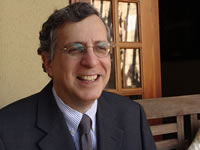
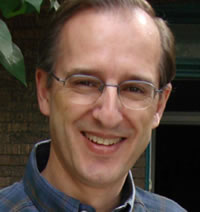
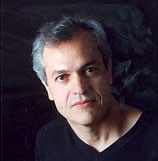


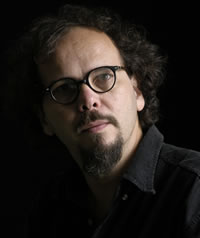
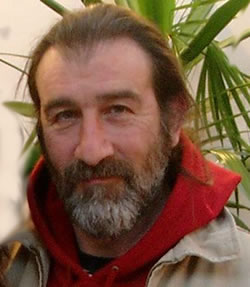
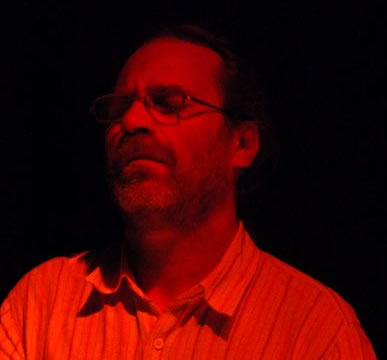
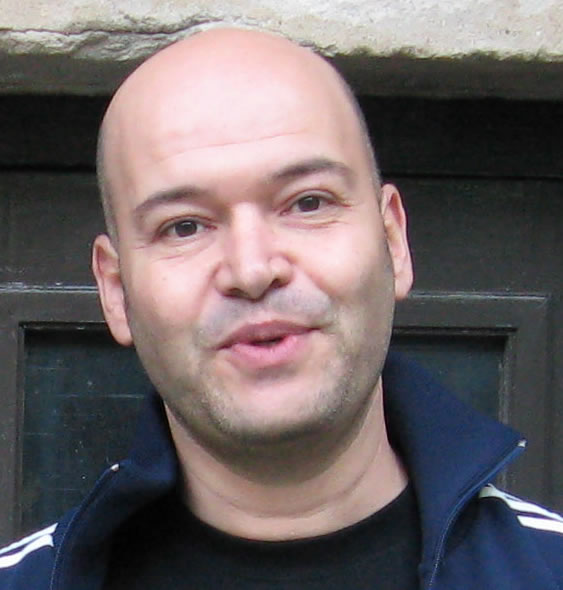
Bibliography
Aharonián, Coriún. “An Approach to Compositional Trends in Latin America.” World New Music Magazine 4 (October 1994). Cologne, Germany.
Coelho de Souza, Rodolfo. “The Use of Brazilian Folk Instrument Sounds in a Concerto for Computer and Orchestra.” Organised Sound 10/1 (April 2005) “New technology, non-Western instruments and composition,” pp. 31-36.
Dal Farra, Ricardo. “Music, New Media and Latin America.” Proceedings of the 8th International Symposium of Electronic Arts (ISEA) 1997 (Chicago IL USA, 22–27 September 1997).
_____. Latin American Electroacoustic Music Collection. Online archive. Montréal: Fondation Daniel-Langlois, 2004. http://www.fondation-langlois.org/flash/e/stage.php?NumPage=542 (Accessed 20 November 2005)
Emmerson, Simmon (ed.). The Language of Electroacoustic Music. London: MacMillan Press, 1986.
Fischman, Rajmil. “Global Village, Local universe: A Statement of Identity.” Leonardo Music Journal 9 (December 1999) “Power and Responsibility: Politics, Identity and Technology in Music,” pp. 53–62.
Fumarola, Martín Alejandro. “Towards a Taxonomy of Latin American Electroacoustic and Computer Music.” Computer Music Journal 21/4 (Winter 1997) “Modeling Analog Synthesis”. Republished in eContact! 2.1 — Amérique latine / Latin America (September 1999). https://econtact.ca/la/taxonomy.htm
Gluck, Robert. “Free Sound Within Culturally Specific Practice.” Proceedings of the International Computer Music Conference (ICMC) 2005: Free Sound (Barcelona, Spain: L’Escola Superior de Música de Catalunya, 5–9 September 2005), pp. 591–595.
Griffiths, Paul. A Guide to Electronic Music. London: Thames and Hudson, 1979.
Morales, Ed. The Latin Beat: The Rhythms and Roots of Latin Music, from Bossa Nova to Salsa and Beyond. Cambridge MA: Da Capo Press, 2003.
Landy, Leigh and Simon Atkinson (Eds.). “Anecdotal Composition.” ElectroAcoustic Resource Site (EARS). Music, Technology and Innovation Research Group, De Montfort University, 2001–2010. http://www.ears.dmu.ac.uk/spip.php?rubrique146 (Accessed 2 January 2006)
Nidal, Richard. World Music: The Basics. New York: Routledge, 2004, pp. 315–350.
Ortiz, William. “Du-Wop and Dialectic.” Perspectives of New Music 26/1 (Winter 1988), pp. 215-223.
Smalley, Denis. “Spectromorphology: Explaining Sound-Shapes.” Organised Sound 2/2 (August 1997) “Frequency Domain,” pp. 107–126.
Whalley, Ian. “New Technology, Non-Western Instruments and Composition” (editorial). Organised Sound 10/1 (April 2005) pp. 1–2.
Social top